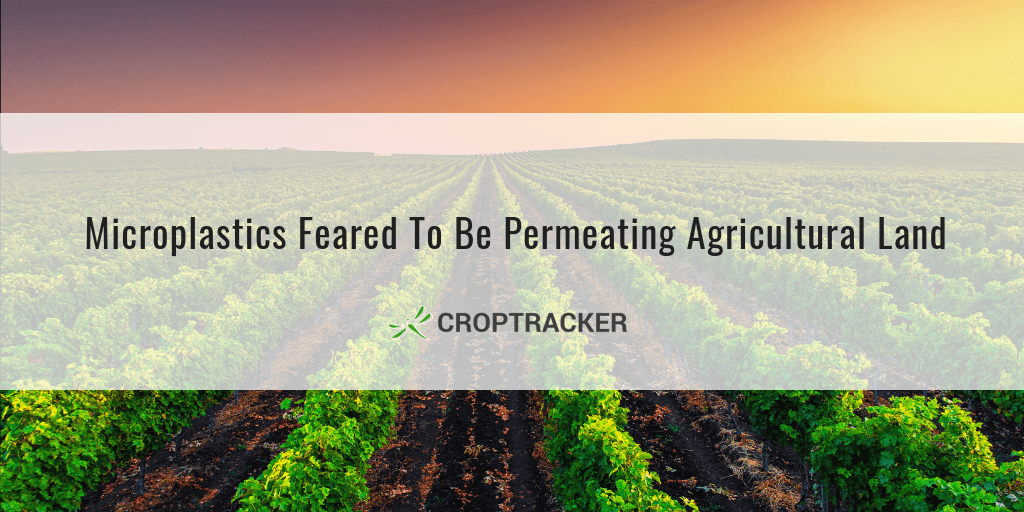The pollution of the oceans by microplastics has been a trending topic for a while. However, recent research indicates that microplastics are more likely to be found in sewage sludge than in our oceans - and this has concerning implications for the agricultural land on which sewage sludge is used as fertilizer.
Microplastics are tiny plastic granules, pellets, fibres and fragments less than 5mm in diameter, often as thin as human hair. They originate from a variety of sources including microbeads from personal care products, fibers from synthetic clothing, pre-production pellets and powders, and fragments degraded from larger plastic products. Numerous studies have shed light on the disastrous consequences of microplastic pollution on marine life (for example, growth and reproductive output reductions due to the fragments block digestive tracts, diminishing the urge to eat, and altering feeding behavior). The research findings prompted a consumer outcry and 8 national bans on microbeads (including Canada, France, and the UK).
However, less-discussed is the pervasiveness of microplastics on farmland - until now.
A new assessment from the European Chemicals Agency (ECHA) reports that microplastics are MORE likely to be found in sewage sludge than in our oceans. Microplastics are commonly washed down the drain at the point of use, the ECHA explains, thus ending them up in sewage systems. As sewage sludge is commonly applied as fertilizer, agricultural lands are believed to be the most plastic-contaminated places outside of landfill and urban spaces, according to the American Chemical Society's Environmental Science and Technology journal. Researchers at the Norwegian Institute of Water Research estimate that between 107,000-730,000 tonnes of microplastic are added to European and North American farmlands each year.
Microplastics have typical half-lives of thousands of years. This accumulation of "immortal" microplastics on farmland raises concerns for the implications on horticulture. Will there be health effects for the humans who eat the produce grown in microplastic-polluted soil? "We can speculate, as certainly plastic can have hazardous substances like endocrine disrupters and carcinogens," says Dr. Mark Browne, an ecologist specializing in microplastic pollution at the University of New South Wales. "These substances can leak out and there can be ecological effects on the soil fauna, which is needed to maintain soil health."
Dr. Browne also illustrated the lack of research on the effects of farmland microplastic pollution on plant and human health. "We don't know very much at all about possible transfer to crops or possible transfer to animals … so we're very much in the dark."
If such transfers do occur, the ramifications on human health could be severe. Consider some of plastic's most common additives: pigments, ultraviolet stabilizers, water repellents, flame retardants, stiffeners such as bisphenol A (BPA), and softeners called phthalates. Some of these chemicals are considered endocrine disruptors and thus can intefere with hormone function (causing weight gain, developmental disorders, and birth defects). Flame retardants can interfere with brain development in fetuses and children. Other compounds are known carcinogens.
Meanwhile, a 2018 study in the Environmental Science and Technology Journal on microplastic contamination of oil found that microplastics affected the bulk density, water holding capacity, and the functional relationship between the soil's microbial activity and water stable aggregates. The study indicates that soil health is affected by microplastics, and raises concerns about the effect on horticulture years down the line, given the estimated yearly farmland microplastic accumulation in the hundreds of thousands of tonnes.
Want a refresher on any of Croptracker's features? Head over to our Knowledge Base, where you'll find step-by-step tutorials as well as common troubleshooting tips and more. And as always, if you're ever stuck, never hesitate to e-mail us at support@croptracker.com or Live Chat with us by clicking the green speech bubble ![]() in your bottom right-hand corner. We're always happy to help you let Croptracker make your farm become more efficient, safe, and profitable!
in your bottom right-hand corner. We're always happy to help you let Croptracker make your farm become more efficient, safe, and profitable!
| Missed Last Week's Blog Post? Fruit & Vegetable Farm Size Steadily Growing |


